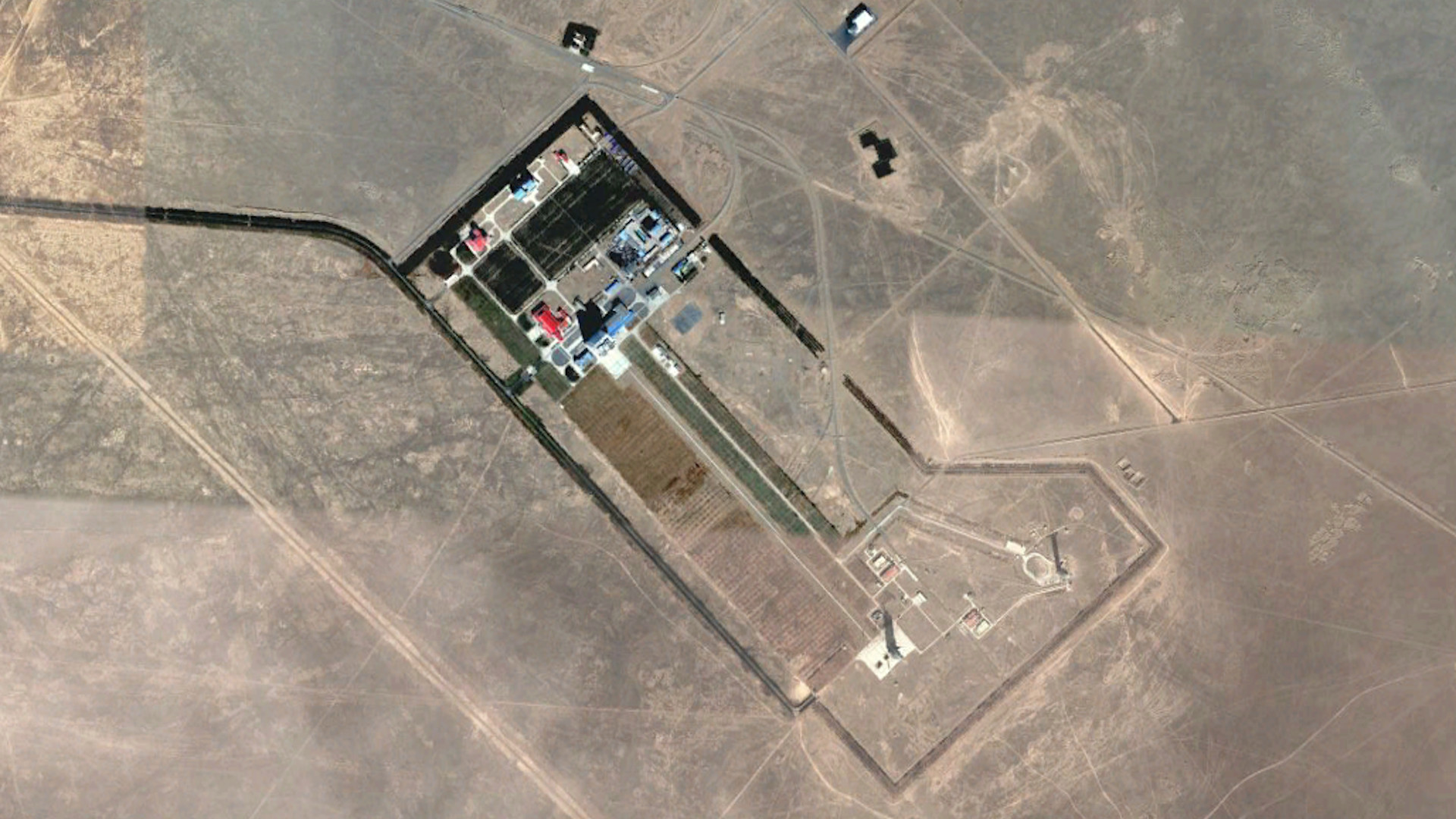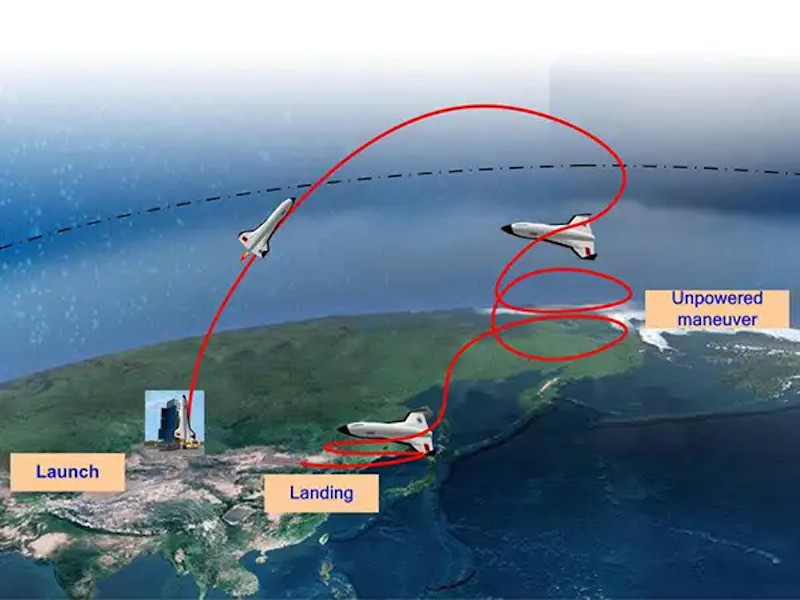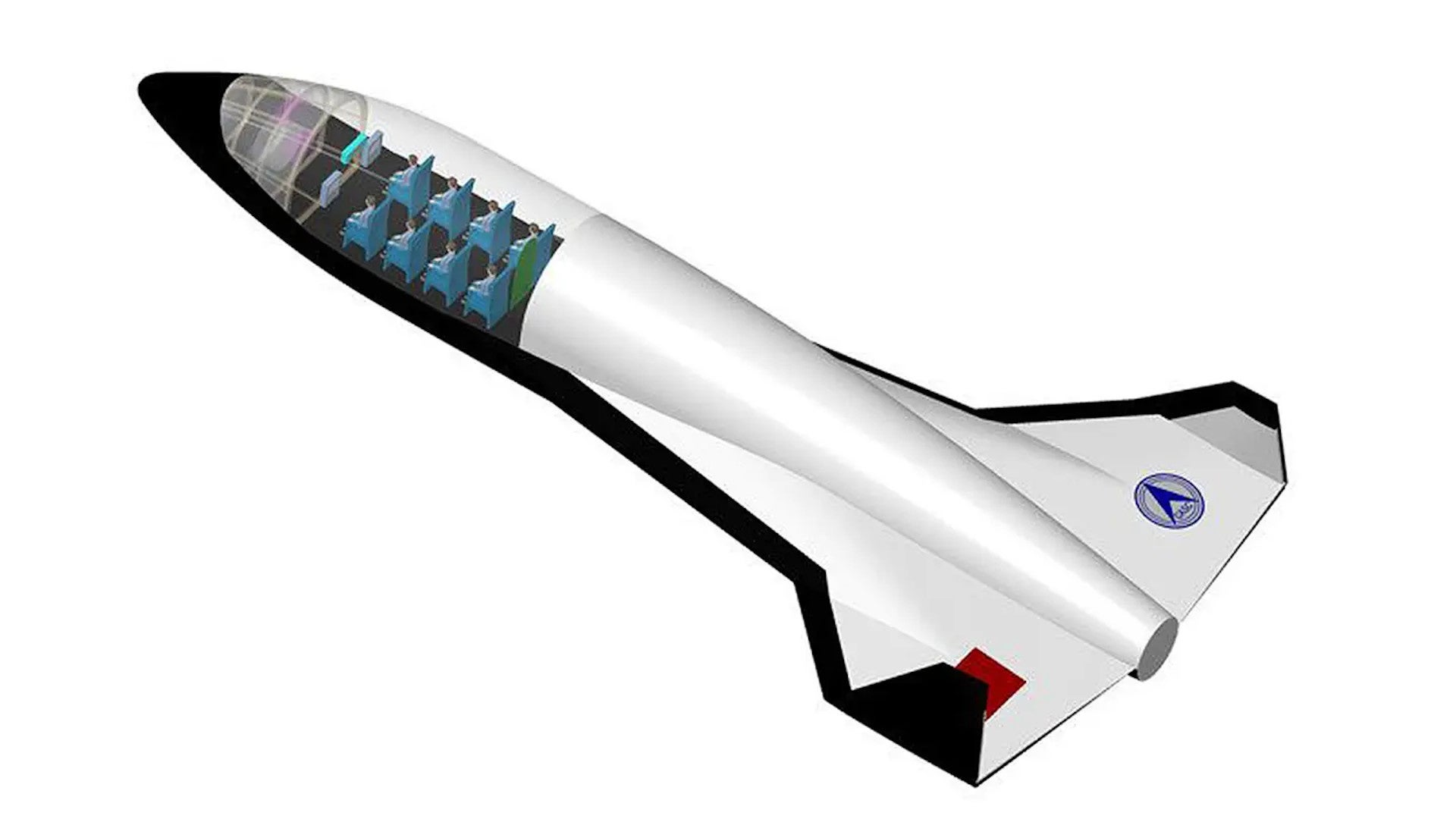The state-run China Aerospace Science and Technology Corporation, or CASC, released a statement earlier today stating that it had successfully carried out the first suborbital test of a reusable space vehicle that can land in a similar fashion to a traditional plane. Details about the test and the spaceplane itself are limited, but CASC has been publicly working on such technologies, ostensibly for commercial use, for years now and had previously said it expected to carry out such a flight test last year.
A Chinese-language statement from CASC said that it had launched the spaceplane from the Jiuquan Satellite Launch Center, which sits in a part of the Gobi Desert in China’s Inner Mongolia region. The corporation said that the vehicle subsequently landed “horizontally” at Alxa Right Banner Badanjilin Airport, which is also in Inner Mongolia and is situated some 220 kilometers, or almost 137 miles, southeast of Jiuquan. No details were provided about the spaceplane’s basic design or performance specifications, or how long the flight lasted, how high it flew, and whether any payloads were aboard at the time.


Where the Earth’s atmosphere ends and space begins is a matter of debate, but the so-called Karman Line, which is defined as being at an altitude of roughly 62 miles up, is a defined boundary in common usage. “Suborbital” is only defined as a space flight that does not complete a full orbit and could, therefore, involve travel above and below that line.
CASC also did not say how the spaceplane gets aloft and stays there, or how it then maneuvers back to Earth. However, back in 2016, the company had described plans for a vehicle that is boosted initially by a traditional space launch rocket and then get the rest of the way with a secondary booster. It would return to Earth in an unpowered mode.

This would fit well with a launch from Jiuquan, which regularly conducts more traditional space launches. Jiuquan was also the site of the launch of another, secretive “reusable experimental spacecraft” last year using a Long March 2F carrier rocket. That vehicle appeared to have subsequently landed a remote airstrip near China’s Lop Nor nuclear test site and could be related to a military spaceplane project called Shenlong.
This latest spaceplane test, which appears to be unrelated, at least officially, to the one last year, would also align with CASC’s stated plans, as of 2016, to develop such a flight vehicle that could reach the Karman Line. At that time, the projected design was described as an 11-ton vehicle with a wingspan of 21 feet that would be capable of carrying five people. There were also plans for a larger version, an artist’s conception of which is seen at the top of this story, which could carry up to 20 people and that would be able to fly beyond the Karman Line.
In addition, in 2017, CASC said that it planned to conduct a flight test of a prototype reusable spacecraft in 2020. That year, the company also outlined a “space transportation roadmap” that included reusable spaceplanes and a nuclear-powered space shuttle. It would not be hard to see how the flight test plans could have been delayed due to a variety of factors, including the complexity of the design and the ongoing COVID-19 pandemic.
If the flight test today is indeed related to the projects that CASC was publicly discussing in 2016 and 2017, it would seem that the vehicle in question is ostensibly intended for commercial use. This is bolstered by the fact the flight ended at a public regional airport, rather than an isolated military test center.
With this in mind, it’s also worth pointing out that this announcement comes just days after space tourism firm Virgin Galatic’s founder Richard Branson and three other passengers flew to the edge of the Karman Line in the company’s VSS Unity, a Scaled Composites SpaceshipTwo reusable spaceplane. Unlike CASC’s previously stated concepts of operation for its spaceplane designs, however, the SpaceShipTwo design uses a specialized mothership aircraft rather than a traditional space launch rocket to makes its initial ascent. This is a general space launch concept that NASA and the U.S. military, as well as Russia and China, have explored in the past, which you read about more here.

At the same time, any reusable spaceplane technology could certainly have military applications. CASC is the primary contractor for the Chinese space program, which is heavily intertwined with the country’s military. Jiuquan is a People’s Liberation Army (PLA) base.
Reusable spaceplanes could provide a variety of valuable capabilities for military activities in space, as well as closer to Earth, offering the potential for rapidly transporting personnel and cargo across large distances, as well as a more flexible method for inserting certain payloads into orbit. Reusable spaceplanes could very well carry out offensive actions against hostile space-based assets or defensive missions to protect friendly ones, as well. There has been very similar speculation over the years about exactly what the U.S. military is doing with its own X-37B miniature space shuttle, which is now under the control of the U.S. Space Force.
This is just one of a number of similar projects that we know about that the various branches of the U.S. military have pursued since the 1960s, as well. Just this year, the Department of the Air Force, which now includes the Space Force, announced a new formal research and development program, called Rocket Cargo, to explore the possibility of conduct long-range logistics across space using large, potentially reusable suborbital rockets. You can read more about that program here.
“The development of reusable space transportation technology is an important symbol of China’s transition from a ‘big’ space-faring nation to a ‘powerful’ space-faring one,” CASC said in the statement today about its spaceplane flight test.
It will be interesting to see what new information about CASC’s spaceplane projects might emerge now with this reportedly successful flight of a prototype design.
Contact the author: joe@thedrive.com
